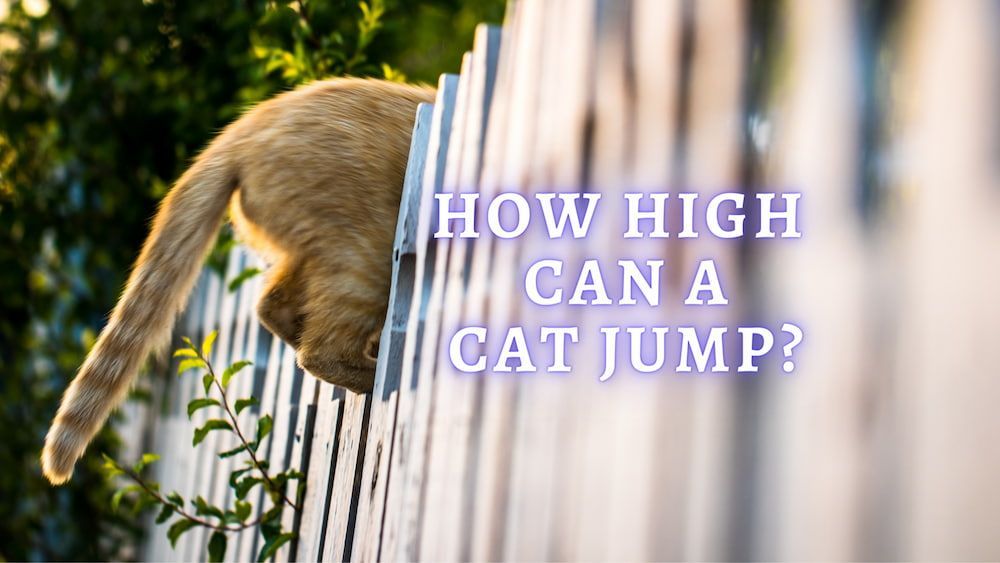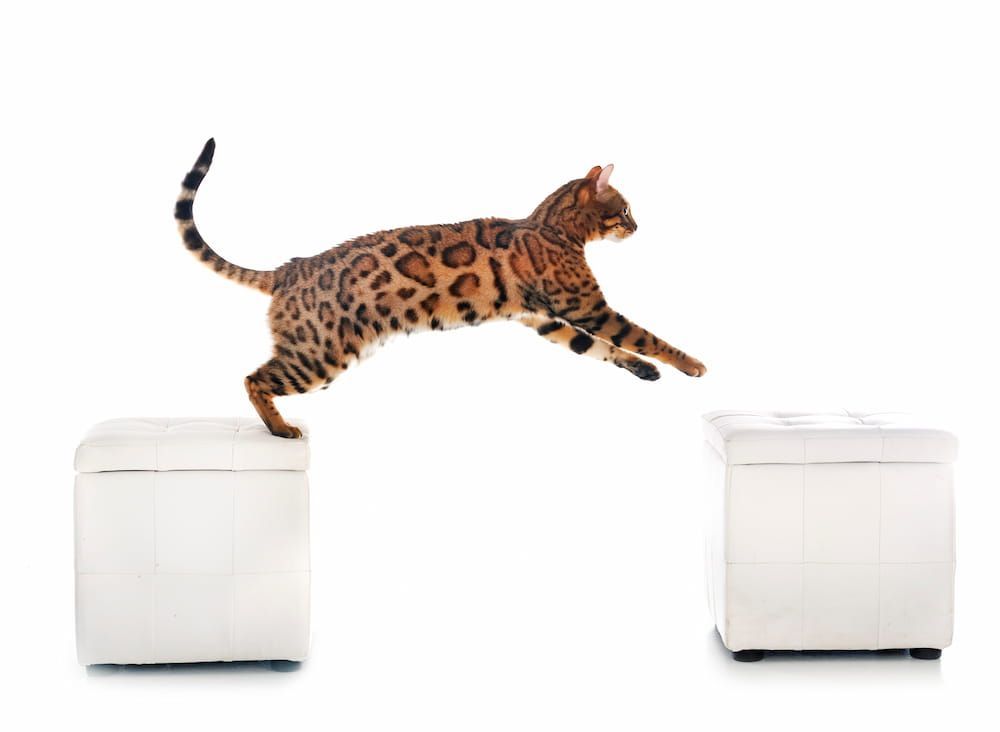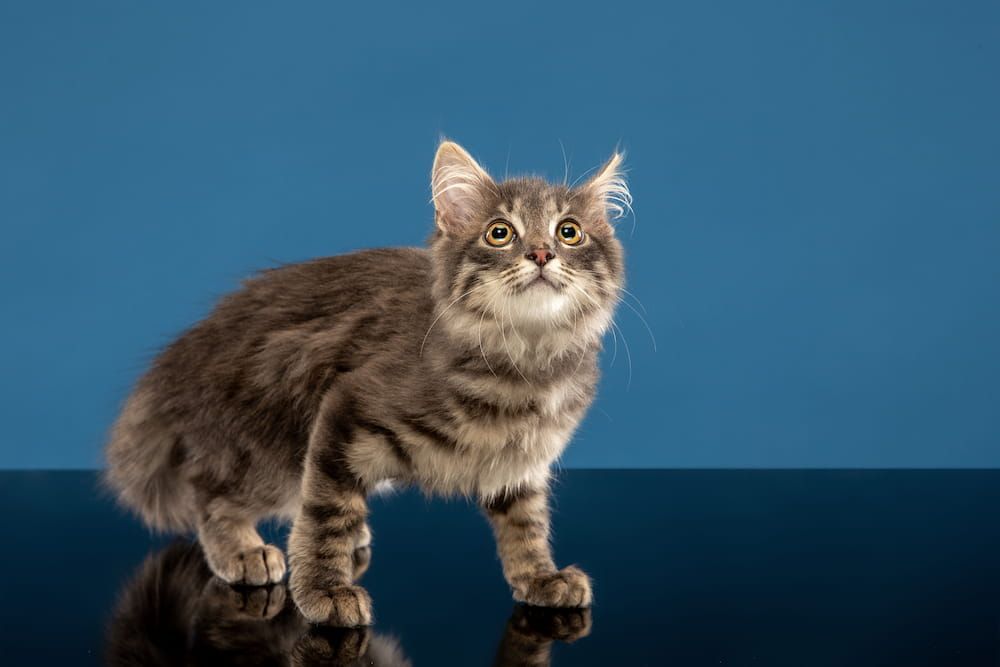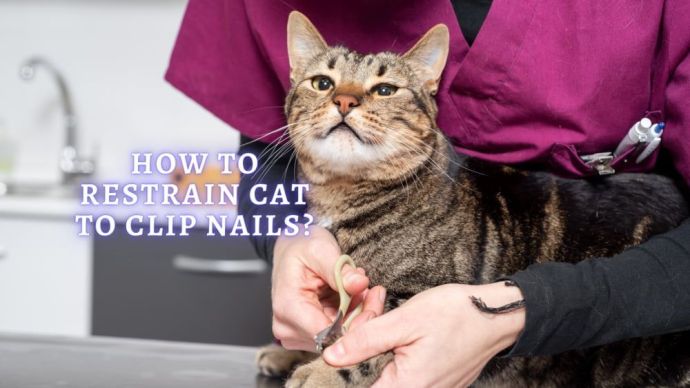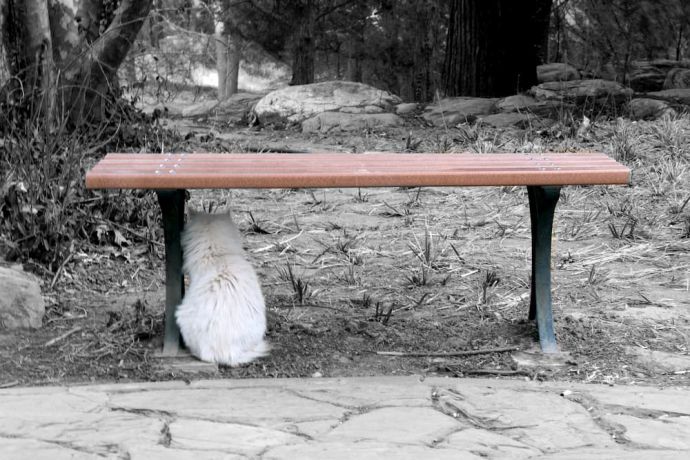How High Can Cats Jump? All You Wanted to Know About Cats Jumping Abilities
Written by:
Author: Seb Jenkins
Seb is a professional SEO writer with a degree in Journalism, he has five years of experience in writing and editing. Seb specializes in topics like dog and cat breeds, aquarium guides, and pet care. He is passionate about educating and entertaining animal owners worldwide. In his spare time, Seb enjoys writing fiction novels.
View all 83 articlesLearn about our editorial process and veterinary review board.
Viewed: 353
Updated on: 06/08/2023
Every cat owner knows how great jumpers their pets can be, leaping on furniture and climbing great heights in the blink of an eye, but just how high can a cat jump? In this article, we are going to look at how far and high the average cat can jump, as well as some of the science behind why they always land on their feet without injury.
How high can an average house cat jump?
The average adult cat’s ability to jump is around five or six times their height, although this of course depends on their individual abilities. The average cat’s height is around 1 foot, measured from the ground to their shoulders, meaning they can potentially jump up to the average height is 5 ft in total. That’s how your feline friend manages to hop up on top of the fridge with such ease!
How long can a cat jump?
The longest cat jump in recorded history was achieved by Waffle the Warrior cat who managed an impressive world record 7 ft! The average house cat is still able to leap a great distance, which is why you will likely see your pet jumping from trees to garden fences or the like.
Why can cats jump so high?
The short answer is strong legs. Cats have extremely powerful back legs and they use this the propel themselves up into the air. While in the air and upon landing, they also use their tails to exert remarkable balance. In one scientific study, experts observed a domestic cat jumping up to heights of 5.2 ft to touch a cotton ball. Things that can impact a cat’s jumping ability include the length of their back legs, their age, their medical conditions, and their fat mass. The longer and stronger the hind legs, the higher they will generally be able to jump. The younger kitty, the stronger their legs tend to be, the highest jump will be. The healthier the cat, the more energy they tend to have when jumping. And the lower their fat mass when compared to lean body mass, the lighter and stronger the cat will be.
How Do Cats Always Land on Their Feet?
Contrary to popular beliefs, felines are able to consistently land on their feet because of their spines and whiskers, not their tails. Feline’s flexible spines are able to twist and turn in a multitude of different directions within a split second, which is perfect when trying to adjust your body to land legs down. While many people associate whiskers with a cat’s muzzle, they actually have whiskers on their forehead, forearms, in front of their ears, and on their cheeks. Felines use these whiskers around their body to measure the change in airflow and aid any necessary change in direction. When you see a cat falling, you should notice them twist instinctively to get their legs facing the ground. The lower they are to the ground, the less time they will have to make these adjustments.
Do Cats Get Hurt When They Jump Down?
If a cat is jumping down from a height on purpose, it will generally be because they think they can do so without causing pain or injury. Felines can land from great heights without so much as a flinch, even if it looks dangerous to us mere humans. However, the older they get, the rougher the landings can become on their weary legs. Older cats of ten years and older can develop conditions such as arthritis, compromising their ability to climb and jump without resulting in pain. Just compare how it feels for a human to run around all day as a child to an 80-year-old.
Therefore, if you have a senior cat, you should make an effort to reduce their need to climb and jump around. That means lowering any towers you have, creating safe routes up to their favorite spots, and providing some kind of step or stool for them to hop onto the couch with you. If a cat finds itself in a position it cannot jump down on without getting hurt, it could get stuck. You will notice when your kitty is stuck because they remain in the high place for a length of time, often meowing and looking distressed or clearly asking you for help. However, the general rule with these animals is that if you see them regularly jumping down from somewhere, they are not hurting themselves.
READ MORE: Can Cats Swim?
How To Stop a Cat From Jumping on Things?
Let’s be honest, there are some things you do not want your kitty to be jumping on. This could be furniture that you don’t want to be scratched or perhaps an area you think is too high for your feline friend. Whatever the case, there are some measures you can put in place to prevent your cat from jumping or climbing on certain things.
- If you place double-sided tape around the surface of an object, your feline friend will tend to stay away from it because it isn’t comfortable for them to climb, leap, or rub themselves on.
- If you lay the aluminum foil on an object, it seems to creep cats out a little bit and results in them staying away from it.
- If you spritz lemon water or any citrus essential oil on a surface, the resulting smell and taste also keep the kitty away, which is a handy mess-free way to dictate exactly what they can and cannot jump on.
- If you store objects on top of furniture such as wardrobes, it will give your cat far less space and opportunity to climb up there. After all, kitties are often looking for a comfortable place to sprawl down and sleep.
Finally, the best way to prevent your kitty from jumping and climbing is to create a more comfortable place for them lower to the ground. After all, if you create a magical place of comfort on the floor, they will have less reason to climb on top of the kitchen cupboards.
READ MORE: Why Does My Cat Lay on My Chest?
FAQ
What is the maximum height a cat can jump?
Most cats can jump between 4.9 ft and 5.9 ft. The general rule is that they can jump between five and six times their own height. A kitty’s height is measured from the floor to their shoulders and is, on average, around 1 ft, hence the total height jump of 4.9-5.9 ft. Of course, your kitty jump height will depend on numerous factors: their age, weight, body length, length of their hind legs, and if there are any underlying medical conditions. Some cats have been known to jump over 6.5 feet into the air! The world record is 7 feet high jump!
Can a cat jump over a 6-foot fence?
In many cases, your cat will be able to jump over a six-foot fence. Remember, when it comes to fences, it is more of a jump and climb action than just a jump. Even if the cat is unable to leap and clear the fence entirely, they still may be able to use claws to scamper up the side. In general, a healthy adult cat is able to jump over a fence between six and eight feet in height. If you want to build a fence that is designed to keep your kitty in your yard and your yard alone, you will need one that is between nine and twelve feet and is hard to climb. Unfortunately, even then it may be hard to keep your cat within the limits. They are very talented jumpers and climbers.
How high can a cat fall without injury?
There is a distinct difference between jumping and falling. If a cat is jumping from a great height, they are generally doing so because they know they can land without hurting themselves. However, of course, we don’t always fall on purpose. Some cats have been known to fall from 200 feet and still survive, although this isn’t exactly common or researched. In terms of scientific studies, some have claimed that cats can fall as high as 20 stories or 200 feet, surviving with few injuries. The moral of this story is that your cat probably won’t be injuring themselves from any falls in and around the house.
 Cat Care How to Get an Aggressive Cat Into a Carrier? 6 Methods to Get a Cat Into a Carrier
Cat Care How to Get an Aggressive Cat Into a Carrier? 6 Methods to Get a Cat Into a Carrier - 1602
- 0
 Cat Veterinary Tips Cat Fleas and Ticks: How to get rid of Fleas on Cats? (Vet Advice)
Cat Veterinary Tips Cat Fleas and Ticks: How to get rid of Fleas on Cats? (Vet Advice) - 185
- 0
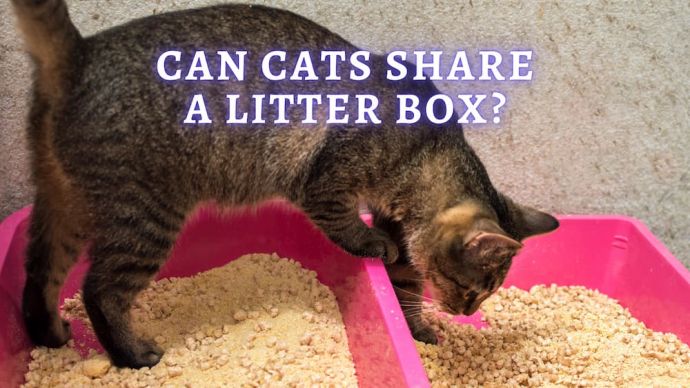 Cat Care Can Cats Share a Litter Box? How Many Boxes Should Be in a Multi-Cat House?
Cat Care Can Cats Share a Litter Box? How Many Boxes Should Be in a Multi-Cat House? - 232
- 1
 Cat Veterinary Tips Cat Chewing Cardboard: Why Does My Cat Chew On Cardboard? Vet Advice
Cat Veterinary Tips Cat Chewing Cardboard: Why Does My Cat Chew On Cardboard? Vet Advice - 4382
- 0
 Cat Care Why Does My Cat Attack My Legs? 10 Reasons Why and What To Do About It (Vet-Approved Advice)
Cat Care Why Does My Cat Attack My Legs? 10 Reasons Why and What To Do About It (Vet-Approved Advice) - 46013
- 21
 Cat Veterinary Tips Cat Stomach Gurgling: Vet Advice on Why is Your Cat Stomach Gurgling?
Cat Veterinary Tips Cat Stomach Gurgling: Vet Advice on Why is Your Cat Stomach Gurgling? - 36469
- 4
 Cat Veterinary Tips My Cat Lost its Voice: Can Cats get Laryngitis? (Vet Advice)
Cat Veterinary Tips My Cat Lost its Voice: Can Cats get Laryngitis? (Vet Advice) - 23554
- 13









